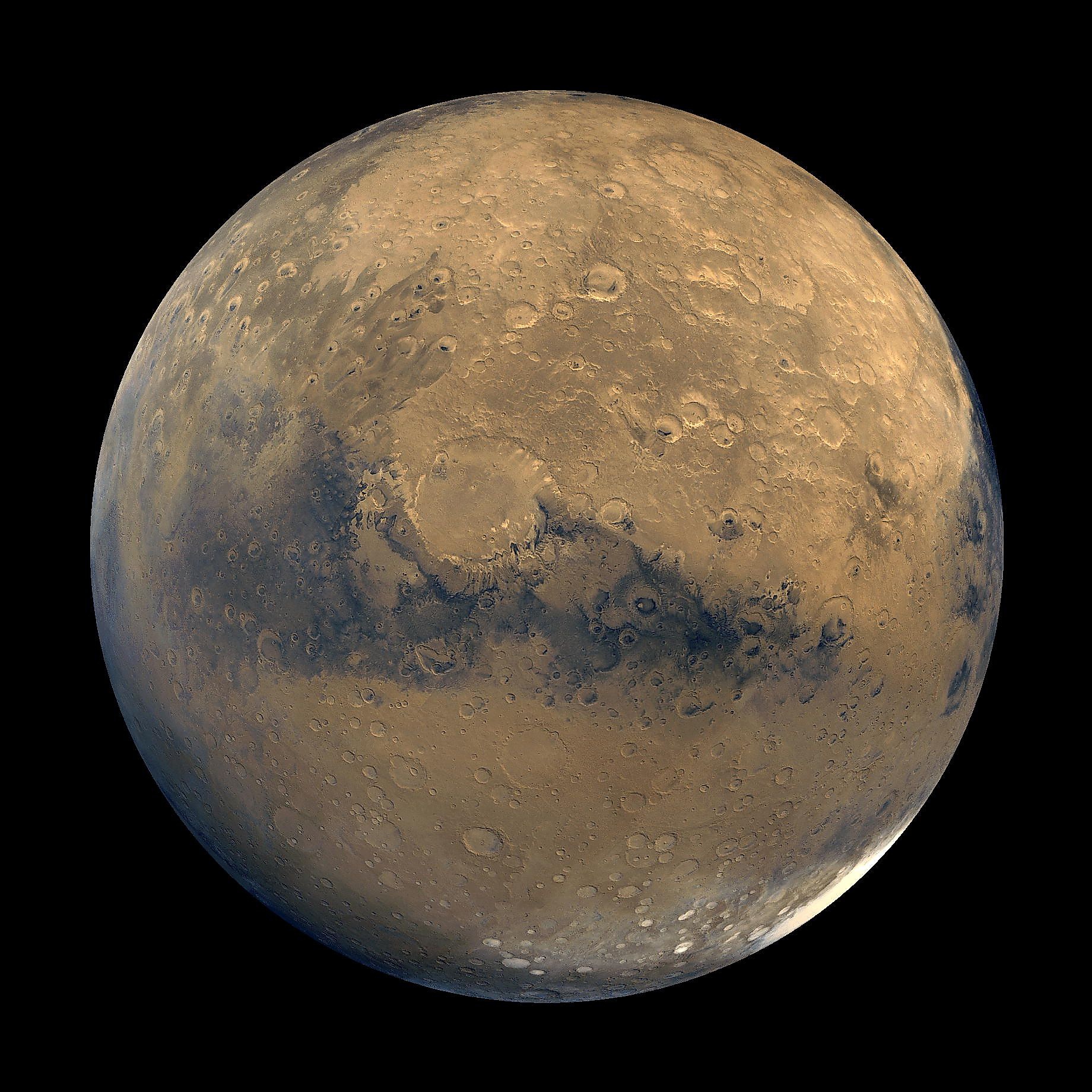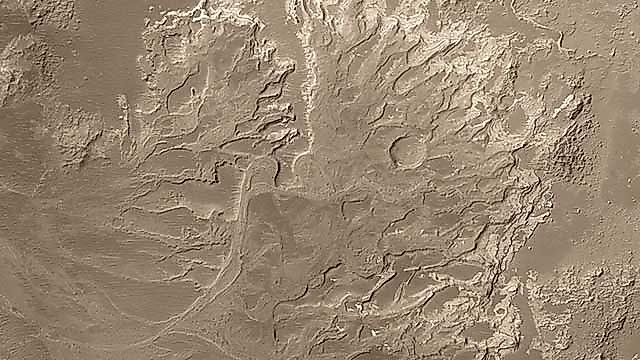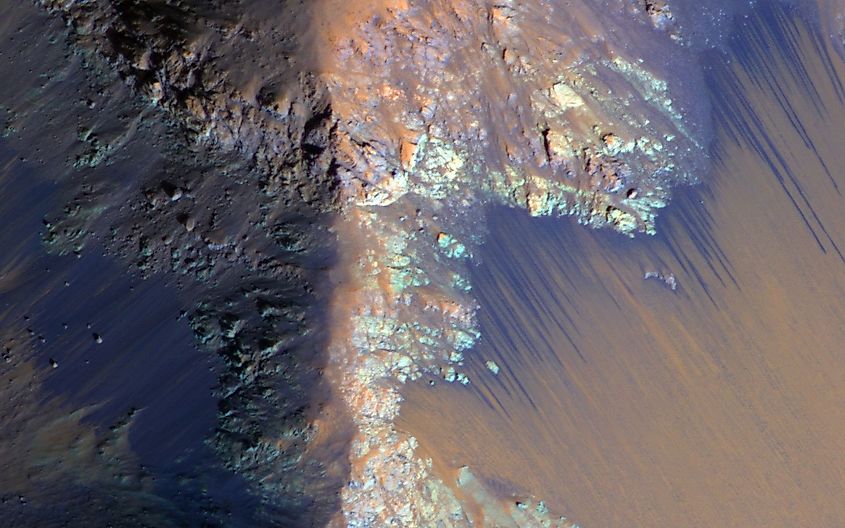
Is There Water On Mars?
Earth is the only planet in our solar system that has liquid water on its surface. However, that was not always the case. Over a billion years ago, Mars was home to vast amounts of liquid water that came in the form of rivers, lakes, seas, and perhaps even oceans. Today, Mars is a dry, barren world, with the only surface water being in the form of ice at its poles. Interestingly, there is some evidence that suggests that liquid water may still exist on Mars deep underground. What happened to Mars’s water and what evidence is there to support it once existed, and perhaps still exists?
Evidence Of Past Water

The first concrete evidence that Mars once had flowing water came from NASA’s Curiosity and Opportunity rovers. Most of the evidence of liquid water has come from the chemical analysis of rocks, which often contain compounds that can only form in the presence of liquid water. The Martian surface is dominated by a type of rock called basalt. Although basalt generally forms from volcanic activity, the chemical composition of basalt can be altered in the presence of liquid water. Basalt can incorporate water into its structure, which causes the rock to weather into other rocks that contain evidence of water. By analyzing the composition of Martian rocks, scientists can look for chemicals that are known to form only in the presence of liquid water. To date, many of the chemicals on Earth that form in liquid water have been found in Martian rocks, a strong indication that liquid water once existed in abundance.
Although the first concrete proof of ancient water on Mars came from rovers in the 2010s, the first hints of liquid water actually came from Martian orbiters in the 1970s. In 1971, NASA’s Mariner 9 spacecraft took some of the highest resolution images of Mars at the time. The spacecraft found geologic structures that looked similar to structures on Earth that form from liquid water. These included river channels, stream channels, deltas, and large deposits of sediment. Mars itself is covered in thousands of geologic structures that likely formed in the presence of liquid water. Furthermore, the existence of so many structures suggests that Mars possessed vast amounts of liquid water for a very long period of time. In fact, some evidence suggests that Mars managed to maintain some amount of liquid water on its surface until as recently as 600-million years ago, a relatively short period of time compared to the 4.5 billion year history of Mars.
What Happened To Mars’s Water?
Unfortunately for Mars, it no longer possesses a strong magnetic field capable of deflecting solar radiation. Without a magnetic field, the solar wind slowly stripped Mars of its atmosphere. Without a dense atmosphere, water could no longer exist in liquid form on the surface. The disappearance of the magnetic field caused the atmosphere to vanish, which in turn caused Mars to lose all its surface water.
Evidence Of Current Water

Mars very likely had vast amounts of liquid water in the past, yet it may still have some liquid water. Temperatures on the surface and atmospheric pressures make it impossible for liquid water to form and exist on the Martian surface, and so if liquid water still exists on Mars, it would have to exist underground. In 2011, an observational study of Mars found some evidence that suggests the presence of salty water underground. For some time, scientists had known about the existence of strange, dark slopes on Mars called recurring slope lineae (RSL). RSL are large streaks that appear on some Martian slopes during the warmer seasons. In 2011, NASA announced that one explanation for these darke slopes was that small amounts of liquid water were being melted and flowing downhill, causing the presence of these dark lines. During the summer months, temperatures are still fairly cold, dropping to minus nine degrees Fahrenheit (minus 23 Celsius). Although that is still below the freezing point of water, water that contains enough salt will actually have a lower freezing point. Thus, even under these colder temperatures, salty water could become liquid. Furthermore, as the water evaporates, it would leave behind a chemical signature that could be observed. In 2015, spectral analysis of RSL revealed a chemical composition that agreed with predictions of liquid water. Although that may seem to prove that liquid water still exists on Mars, subsequent studies have suggested other explanations, and further spectral analysis has contradicted earlier studies. As of yet, it remains unknown whether or not liquid water still exists on Mars.











